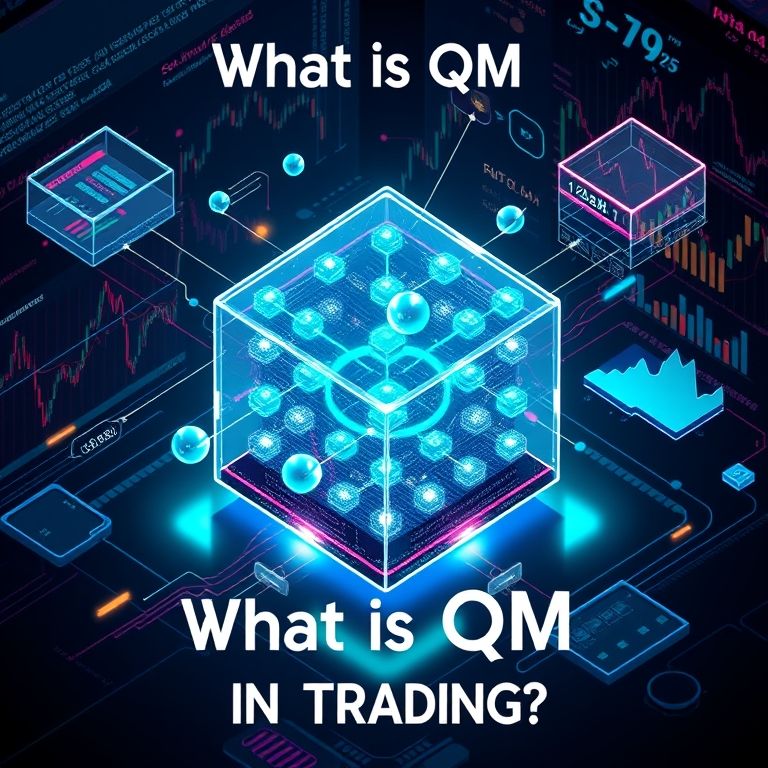what is qm in trading
What is QM in Trading? A Practical Look at Quantitative Modeling in Web3 Finance
Introduction
If you’ve watched markets wake and crash in a single trading session, you know it’s more than luck. QM in trading—short for quantitative modeling—turns data into disciplined decisions. It’s about building repeatable rules, testing them against history, and letting software help you ride trends across assets. In today’s Web3 world, QM isn’t just for quants in glass towers; it’s fading the line between traditional forex, stocks, crypto, indices, options, and commodities, helping everyday traders navigate a multi-asset landscape with more confidence.

What QM Really Means in Trading
QM is a disciplined toolkit for extracting signal from data. Think models, stats, and backtests that translate price movements, liquidity, and risk into actionable rules. In practice, you’ll see:
- Signal generation: simple momentum cues, volatility squeezes, or cross-asset relationships that fire when probabilities align.
- Risk controls: position sizing, stop rules, drawdown limits, and stress tests baked into the model.
- Execution routines: timers, order types, and slippage checks to turn a signal into a reliable trade.
I started with a tiny, homegrown QM rule on a rainy afternoon—watching how a moving-average crossover behaved in a handful of FX pairs—and it quickly evolved into a systematic approach. The key was consistency, not perfection; you’re aiming for repeatable decisions, not shrine-worthy miracles.
Cross-Asset Reach: Forex, Stock, Crypto, Indices, Options, Commodities
QM shines when it can span markets. Different assets carry different rhythms, so a robust QM looks at:
- Liquidity and cost: forex and major indices often trade with lower friction than thinly traded crypto pairs; options require probabilistic views on expiry and implied vol.
- Volatility regimes: crypto can swing intraday, while commodities react to supply shocks.
- Correlations: a QM can diversify whether you’re trading a carry-friendly currency, a tech stock, or an oil proxy, reducing risk through smarter allocation.
The beauty is you don’t need separate systems for every market; a well-calibrated QM framework lets you adapt signals to current liquidity, volatility, and execution costs.
The QM Toolkit: Data, Backtesting, and Charting
A practical QM setup blends data, testing, and visualization:
- Data sources: price series, order book dynamics, and, in Web3, on-chain metrics (gas prices, wallet activity, liquidity across AMMs).
- Backtesting and simulation: walking signals through history to gauge profitability and risk.
- Visualization: dashboards that show drawdown, exposure, and cross-asset correlations in real time.
- Security and reliability: validating feeds, monitoring for data drift, and safeguarding against model overfitting.
This isn’t about flashier tech; it’s about dependable, observable rules you can defend during a drawdown.
Leveraging QM: Risks, Leverage, and Practical Tips
QM helps you think clearly about risk, but it doesn’t eliminate it. Practical steps:
- Risk budgets: don’t risk more than a small fraction of capital on any single idea; diversify across assets and strategies.
- Leverage discipline: use modest leverage and taper it when volatility spikes; avoid “free” leverage that inflates drawdowns.
- Robust signals: favor signals that persist through different regimes, and retire those that only work in a single market phase.
- Paper trails: keep a log of decisions, not just P/L, so you can audit and refine your models.
A personal tip: combine a momentum cue with a risk filter (like a volatility or liquidity check) so a good signal doesn’t become a costly mistake in a choppy market.
DeFi Today: Development, Challenges, and Security
Web3 brings QM into a decentralized layer, with advantages and hurdles:
- Pros: transparent rules, programmable trading, and near-instant settlement across chains.
- Challenges: oracle reliability, smart contract risk, liquidity fragmentation, and regulatory uncertainty.
- Reliability practices: rely on multiple data feeds, stress-test smart contracts, and use risk controls that survive cross-chain events.
As DeFi matures, expect more standardized risk metrics and better synchronization between on-chain data and traditional charting tools.
Future Trends: Smart Contracts, AI, and Smart Trading
The horizon for QM is bright and noisy in a good way:
- Smart-contract trading: automated strategies deployed on-chain with open governance and auditable execution.
- AI-driven enhancements: machine learning models for regime detection, adaptive risk controls, and sentiment-aware signals that respect market structure.
- AI plus QM synergy: combining probabilistic models with natural-language insights for events (earnings, policy changes) to adjust exposure ahead of shocks.
The promise is smarter, faster, and more resilient trading that respects both on-chain transparency and the complexity of multi-asset markets.
Slogan and Takeaway
QM in trading is your probability engine for smarter, calmer markets.
Embrace a toolkit that respects data, risk, and discipline—across forex, stocks, crypto, indices, options, and commodities. In a world where DeFi evolves but still faces challenges, a well-constructed QM approach—grounded in live data, verifiable backtests, and prudent risk controls—helps traders stay resilient. As technology advances, expect smarter contracts, AI-assisted decision-making, and ever-tiner risk management to become the new normal in what QM can offer to the Web3 financial journey.

